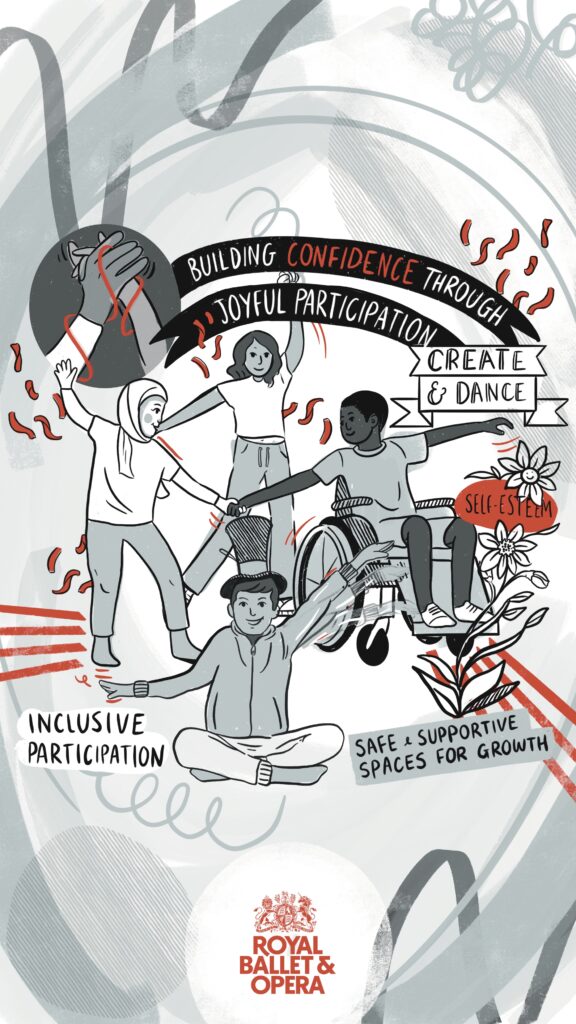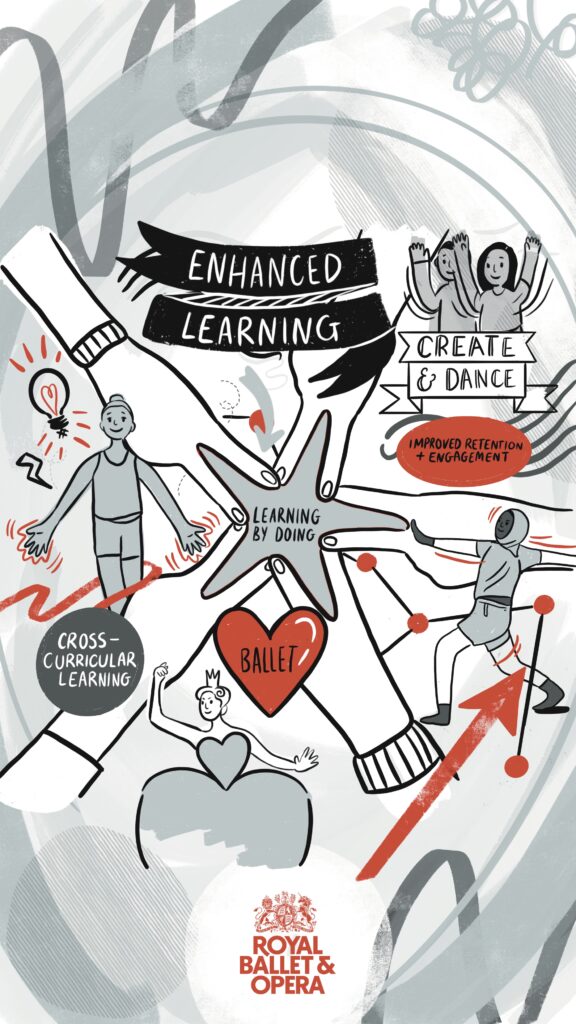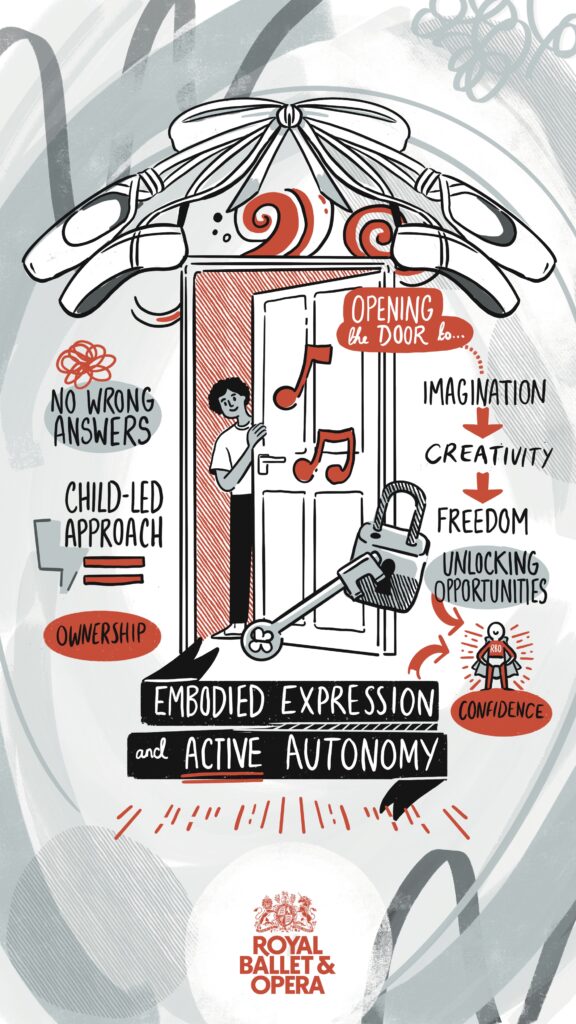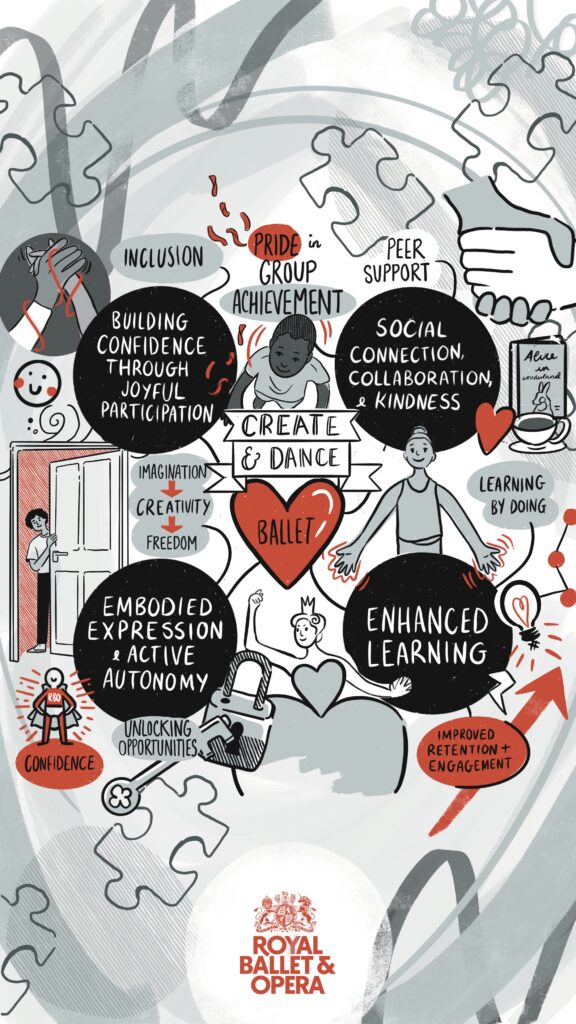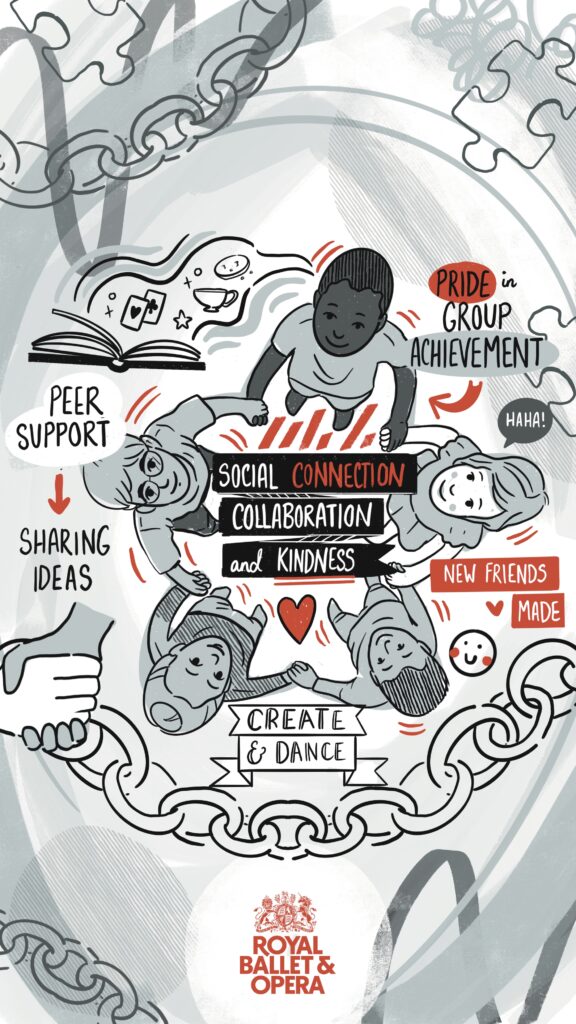by Marie Frazer, Dr Jen Hall and Mariam Fargin
Researchers, Born In Bradford
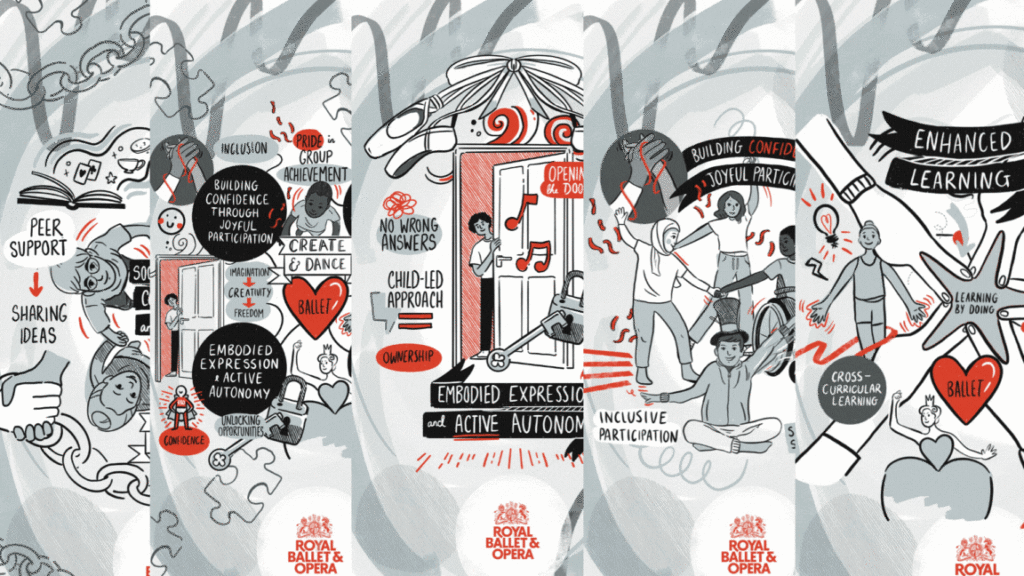
We’re delighted to share the findings of the “Dancing into Wellbeing” evaluation, a collaborative report by Born in Bradford (BiB),with support from NIHR Applied Research Collaboration Yorkshire and Humber (YH ARC), on the impact of the Royal Ballet and Opera’s (RBO) ‘Create and Dance’ programme in primary schools across our region.
Embedding high-quality, creative dance education directly into the school curriculum isn’t just about fitness, it’s a powerful, accessible intervention for boosting children’s well-being and life skills. Our qualitative evaluation across nine Bradford primary schools, with 252 children aged 7 to 11 years old revealed four interconnected themes showing how creative dance is nurturing happier, more engaged children.
How does dance impact wellbeing?
1. Building Confidence Through Joyful Participation
The core of ‘Create and Dance’ is joyful participation, enabling children to overcome initial shyness and find pride in their achievements.
The non-judgemental, imaginative nature of the sessions provides a safe space where there’s no wrong answer in dance. This supportive environment, fostered by teachers freshly trained in teaching dance, has led to visible boosts in self-esteem. Children move from initial apprehension to excitedly showcasing their original routines for peers, experiencing a sense of pride when they had something.
2. Social Connection, Collaboration, and Kindness
The programme successfully cultivates a strong sense of social connection and teamwork. By encouraging group choreography, the sessions foster collaboration, empathy, and mutual support among pupils.
Children reported feeling happy because they liked “being with my friends” and that it “isn’t lonely”. The emphasis on collaborative creation strengthens peer relationships and develops emotional intelligence. Researchers observed pupils organically adapting dance routines for classmates with physical disabilities, demonstrating genuine peer support and a deeply inclusive approach that strengthened class cohesion.
3. Embodied Expression and Active Autonomy
‘Create and Dance’ provides a unique outlet for creative, autonomous self-expression.
Instead of drilling technical ballet steps, the programme empowers children with active autonomy, encouraging them to create their own movements to represent characters or concepts such as the water cycle or the Industrial Revolution .
This approach helps embed abstract academic concepts, as children actively remember processes they embodied through movement. Children overwhelmingly enjoyed the creative aspects because it allowed them to “express my feelings and personality” and experience a sense of freedom. Crucially, focusing on creative play over technicality helped break down gender stereotypes, drawing in reluctant students, especially boys, who discovered they enjoyed the freedom of creative movement.
4. Enhanced Learning and Cross-Curricular Impact
The programme proved highly valuable as a pedagogical tool. Teachers found that applying the principles of creative dance supported broader educational outcomes. The link between creative movement and academic topics like science and history enhanced understanding and engagement for pupils. This kinesthetic, “learning by doing” approach appeared particularly beneficial for reluctant writers, as movement provided new ideas and vocabulary for written work. This shows how arts-based learning can foster success for children who may not thrive in traditional classroom formats.
Sustainable Impact: Empowering Teachers
Beyond the children, the programme had a major impact on teacher confidence and professional development. Teachers, many of whom were initially hesitant about teaching dance, gained new skills and enthusiasm through the RBO’s training.
This professional growth has created a ripple effect, leading to plans for:
- Curriculum integration: Teachers are embedding creative dance into future planning across year groups and subjects .
- Staff Empowerment: Teachers are sharing the training with colleagues, multiplying the programme’s reach and embedding creative, inclusive teaching methods school-wide .
Conclusion and Recommendations
The ‘Create and Dance’ programme is a valuable model for integrating creative health into education, demonstrating significant positive impacts on wellbeing, social skills, and learning engagement, particularly in diverse and disadvantaged contexts.
We advocate for continued investment in and expansion of creative health programmes to ensure all children in our region and beyond have the opportunity to dance into wellbeing.
